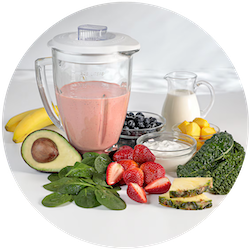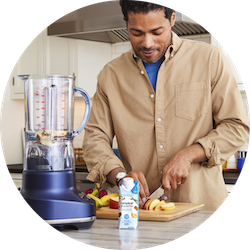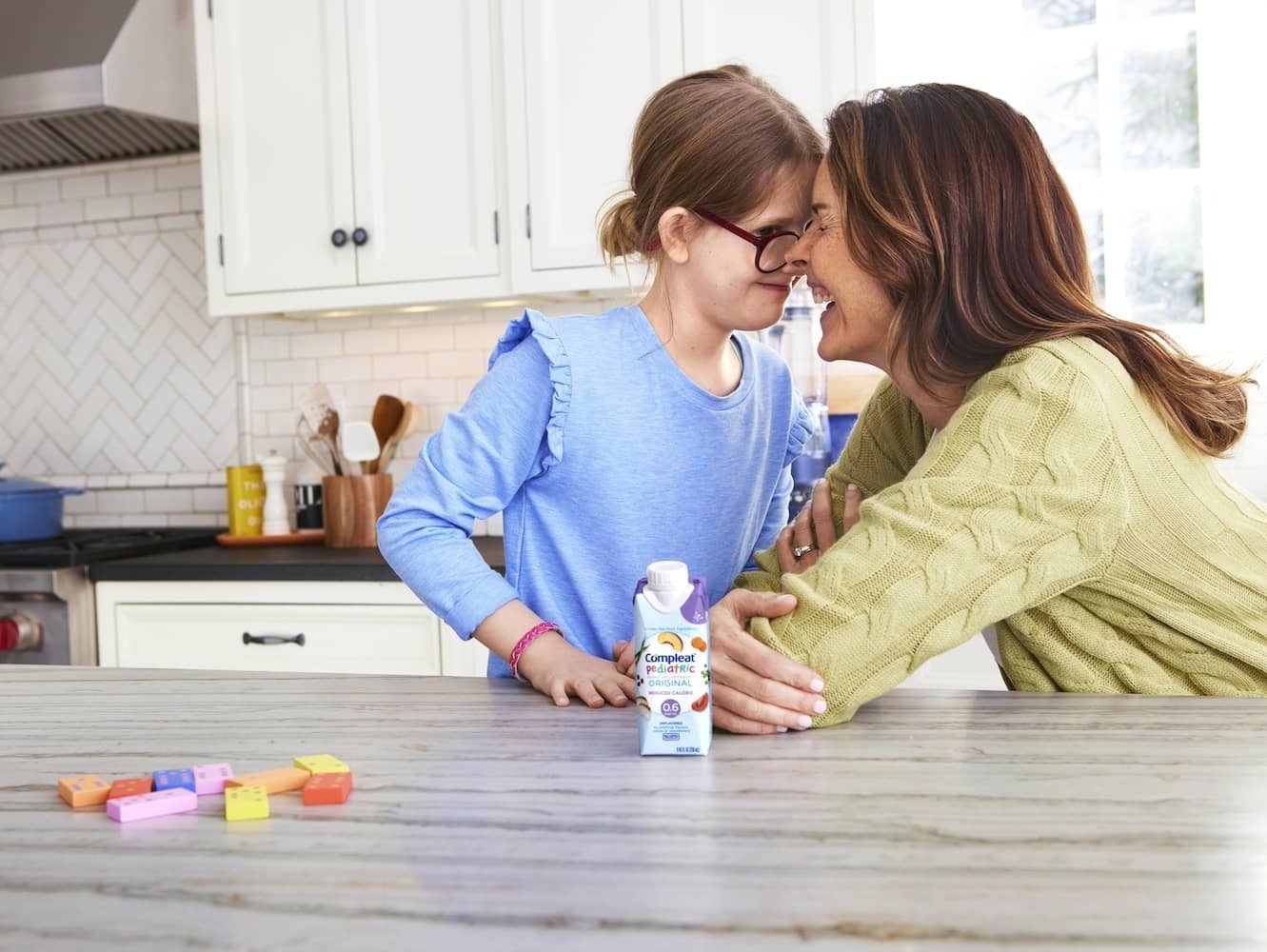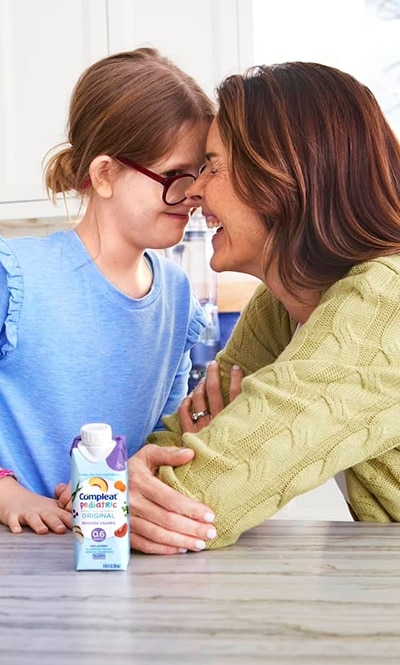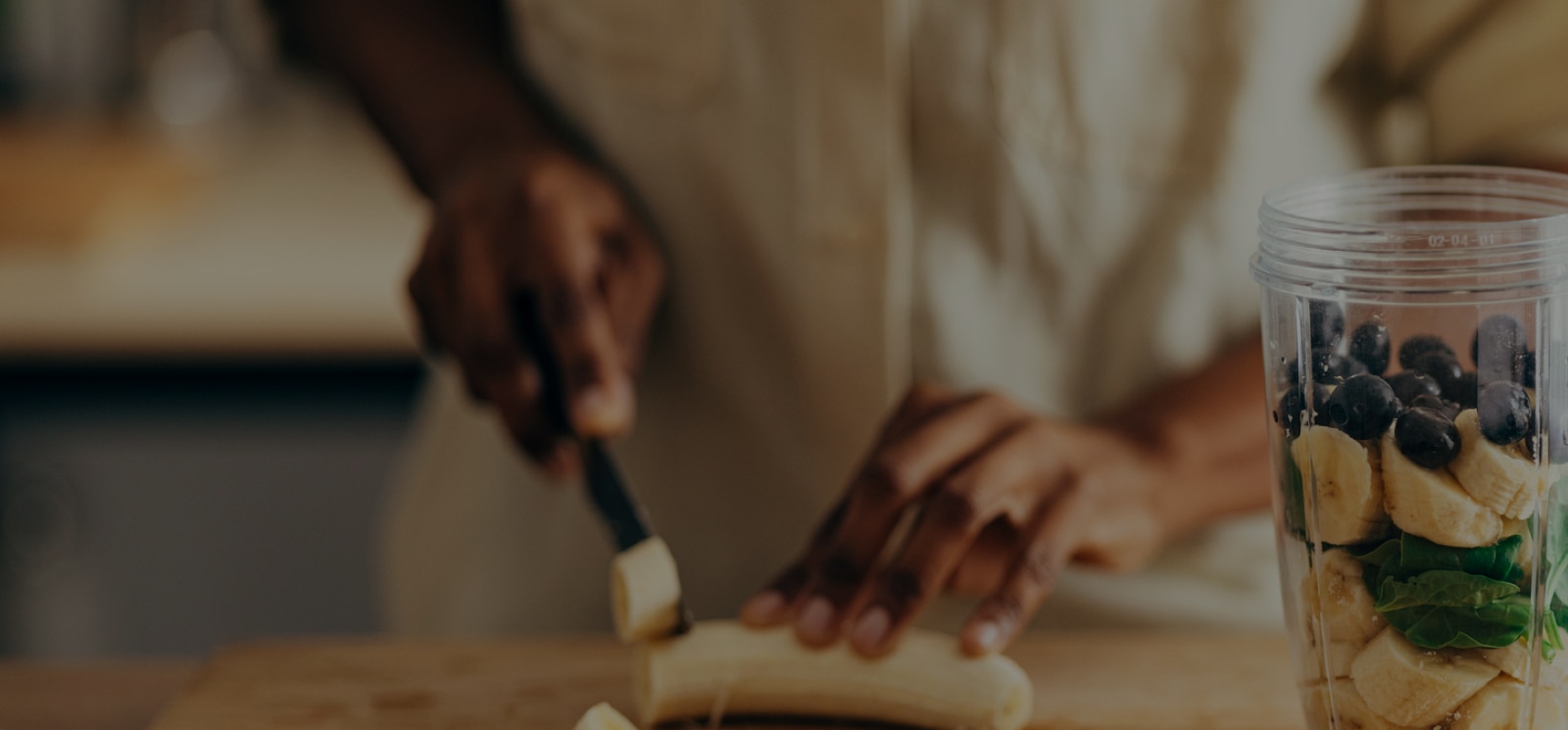
Getting Started Tips
- Before starting or switching to a homemade tube feeding regimen, consult with your health care professional to make sure it is right for you or your loved one.
- The decision should be based on your's or your loved one's unique needs.
- If you are already using a commercial tube feeding formula, but want to start using a homemade blenderized formula, work closely with your healthcare provider to determine the best transition plan. 5ome options include:
- Start by replacing 1 to 2 bolus {syringe) feedings with the homemade blenderized recipe, but continue to provide the current formula for the remaining feedings or overnight, if a pump is available. Try this for 1-2 weeks prior to transition to 100% homemade blenderizedfeedings.
- Transition slowly over one week. Give one quarter of the recipe for a few days, then one half, and then all of the blenderized recipe by the end of one week. If there is any intolerance, wait an extra day or two before increasing the volume of the blenderized feeding.
- If adding any foods that have never been tried before, introduce one new food at a time, and wait three days before adding another new food.
Feeding Tips
- Bolus feeding with a syringe works best and provides the pressure needed to administer a homemade formula through the feeding tube.
- To prevent clogging and for ease of administration, a 14-french gastrostomy tube is best; smaller tubes are more likely to clog.
- Use a 60 mL syringe to administer the prescribed amount of feeding over 15 to 45 minutes.
- Administer the feeding at room temperature.
- Feedings can be held for up to 2 hours at room temperature. Discard unused feeding after 2 hours.
- Remember to flush the feeding tube with water before and after each feeding. Water is essential for hydration, bowel function, skin integrity, urine production, and many other body functions.
Kitchen Tips
- Use safe kitchen and food handling practices.
- Wash hands for 20 seconds with soap and warm water.
- Wash cutting boards, dishes, utensils, equipment, and counter tops with hot, soapy water after preparing each food item and before you go onto the next item.
- Avoid cross contaminating foods. Use a separate cutting board and knives for fresh produce and another cutting board and knives for raw meat, poultry, or seafood.
- Use separate plates and utensils for raw and cooked foods.
Preparation Tips
- A high-speed blender is recommended as these blenders can completely liquefy solid food into a smooth consistency. Compared to regular blenders, they are better at blending tough leafy green foods and stringy foods.
- Blend until mixture is completely smooth and liquefied--no chunks or pieces of food should be present.
- If any chunks or pieces of food remain, blend a little longer.
- If needed, strain to remove any remaining pieces of food.
- Water may need to be added to help blend the recipe to a smooth consistency, but remember this will add to the overall volume that has to be fed each day.
Storage Tips
- Keep foods at proper temperatures: 40ºF or below for refrigerator and 0°F or below for freezer.
- Cover and store unused blenderized tube feeding in an air tight, nonporous (i.e glass) container with a tight fitting lid in the refrigerator for up to 24 hours. If not refrigerated, discard formula after 2 hours.
- If making multiple servings at once, divide the batch of homemade formula into individual servings. Store in tightly covered nonporous containers in the refrigerator for up to 24 hours.
- If preparing feedings in advance that will not be used for 24 hours-48 hours, place in the freezer immediately in airtight, nonporous containers when thawing. Thaw in the refrigerator, not on the counter.
- To warm a feeding that has been refrigerated, run the container under warm water. Avoid microwave heating as microwaves can heat unevenly.
- If using formula as part of the recipe, or as part of the daily or weekly meal plan, store unopened cartons or pouches of formula at room temperature. Do not store near a heat source and do not freeze.
- Cover and store opened cartons or pouches of formula in the refrigerator for up to 24 hours. Do not freeze.
